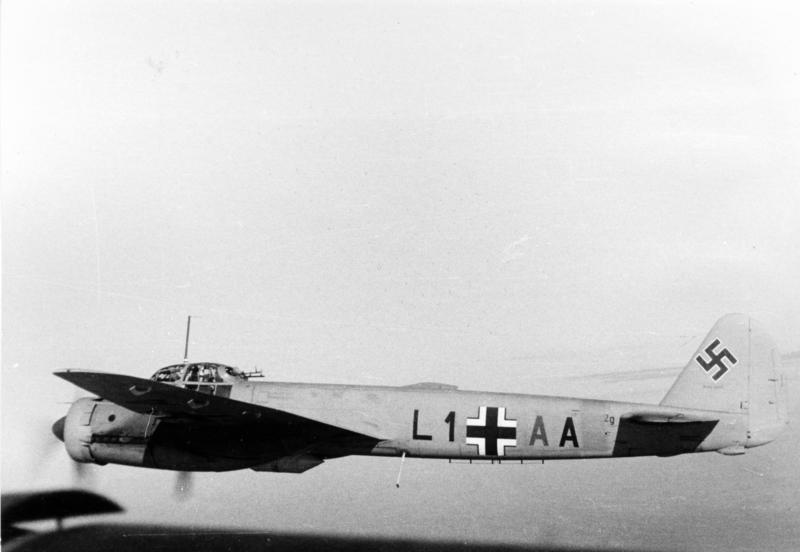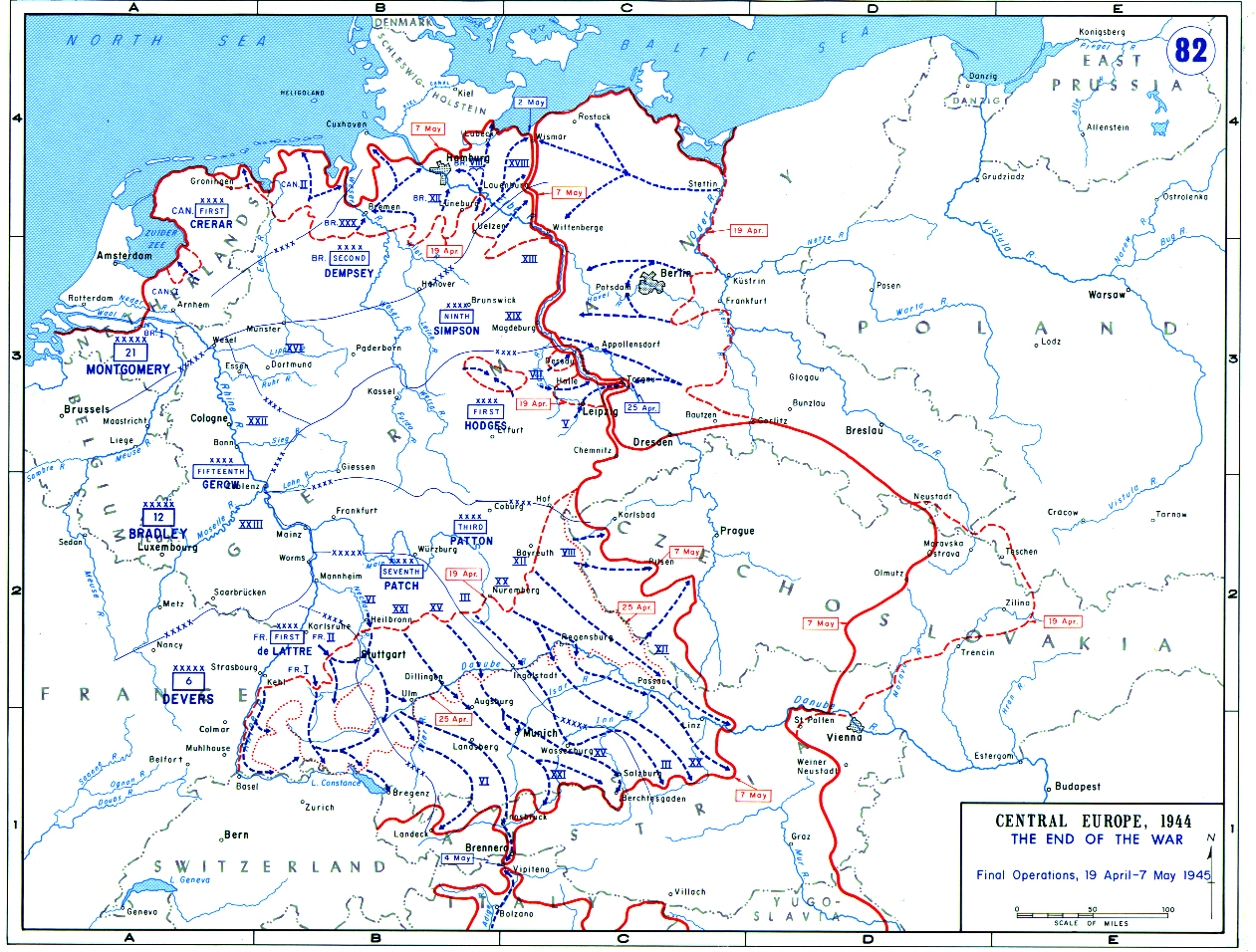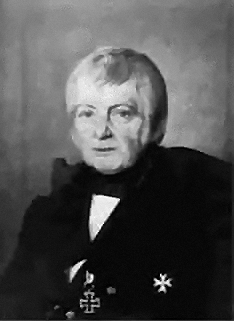|
Gustav Denk
Gustav Denk (24 January 1915 – 13 February 1943) was a German military aviator who served in the Luftwaffe during World War II. As a fighter ace, he was credited with 67 aerial victories—that is, 67 aerial combat encounters resulting in the destruction of the enemy aircraft—claimed in over 500 combat missions. One aerial victories were claimed over the Western Front, the other victories were claimed over the Eastern Front. Denk was born in Soest, and following fighter pilot training was posted to ''Jagdgeschwader'' 52 (JG 52—52nd Fighter Wing) in 1939. He claimed his first aerial victory on 13 July 1940 during the Battle of Britain. In 1941, his unit was transferred east where it participated in Operation Barbarossa, the German invasion of the Soviet Union. In January 1943, Denk was appointed ''Staffelkapitän'' (squadron leader) of 5. '' Staffel'' (5th squadron) of JG 52. On 13 February 1943, he was killed in action, shot down by Soviet anti-aircraft ar ... [...More Info...] [...Related Items...] OR: [Wikipedia] [Google] [Baidu] |
Soest, Germany
Soest (, as if it were 'Sohst'; Westphalian: ''Saust'') is a city in North Rhine-Westphalia, Germany. It is the capital of the Soest district. Geography Soest is located along the '' Hellweg'' road, approximately south-west of Lippstadt, roughly east of Dortmund and roughly west of Paderborn. Neighbouring places * Bad Sassendorf *Ense *Lippetal *Möhnesee *Werl * Welver Legends The Norwegian Þiðrekssaga from the 13th century, a series of tales about the Gothic King Theoderic the Great, identifies Soest (called Susat) as the capital of Attila's (?–453) Hunnic Empire. The actual location of Attila's capital has not been determined. History Owing to its fertile soil (predominantly brown silty clay loam), the area around Soest is believed to have been settled well before the village is first mentioned in the ''Dagobertsche Schenkung'' in 836. Excavations in recent decades have uncovered signs of habitation stretching back more than 4000 years. During the 11th and 12th ... [...More Info...] [...Related Items...] OR: [Wikipedia] [Google] [Baidu] |
Western Front (World War II)
The Western Front was a military theatre of World War II encompassing Denmark, Norway, Luxembourg, Belgium, the Netherlands, the United Kingdom, France, and Germany. The Italian front is considered a separate but related theater. The Western Front's 1944-1945 phase was officially deemed the European Theater by the United States, whereas Italy fell under the Mediterranean Theater along with North Africa. The Western Front was marked by two phases of large-scale combat operations. The first phase saw the capitulation of Luxembourg, Netherlands, Belgium, and France during May and June 1940 after their defeat in the Low Countries and the northern half of France, and continued into an air war between Germany and Britain that climaxed with the Battle of Britain. The second phase consisted of large-scale ground combat (supported by a massive strategic air war considered to be an additional front), which began in June 1944 with the Allied landings in Normandy and continued until ... [...More Info...] [...Related Items...] OR: [Wikipedia] [Google] [Baidu] |
Sobolewo, Białystok County
Sobolewo is a village in the administrative district of Gmina Supraśl, within Białystok County, Podlaskie Voivodeship, in north-eastern Poland. It lies approximately south of Supraśl Supraśl (; be, Су́прасль; ) is a town and former episcopal see in north-eastern Poland. Supraśl is in Podlaskie Voivodeship (province) since 1999, previously in Białystok Voivodeship (1975-1998) (1975–1998), and is in Białystok C ... and east of the regional capital Białystok. The village has a population of 1,000. References Villages in Białystok County {{Białystok-geo-stub ... [...More Info...] [...Related Items...] OR: [Wikipedia] [Google] [Baidu] |
Suwałki
Suwałki ( lt, Suvalkai; yi, סואוואַלק) is a city in northeastern Poland with a population of 69,206 (2021). It is the capital of Suwałki County and one of the most important centers of commerce in the Podlaskie Voivodeship. Suwałki is the largest city and the capital of the historical Suwałki Region. Until 1999 it was the capital of Suwałki Voivodeship. Suwałki is located about from the southwestern Lithuanian border and gives its name to the Polish protected area known as Suwałki Landscape Park. The Czarna Hańcza river flows through the city. Etymology The name derives from Lithuanian ''su-'' (near) and ''valka'' (creek, marsh), with the combined meaning "place near a small river or swampy area". History The area of Suwałki had been populated by local Yotvingian and Prussian tribes since the early Middle Ages. However, with the arrival of the Teutonic Order to Yotvingia, their lands were conquered and remained largely depopulated in the following ce ... [...More Info...] [...Related Items...] OR: [Wikipedia] [Google] [Baidu] |
Stab (Luftwaffe Designation)
The German language term ''Stab'' (literal translation: "staff") was used during World War II to designate a headquarters unit of the German ''Luftwaffe'' (air force). There were ''Stab'' units at the level of a '' Gruppe'' or ''Geschwader'' – units that were equivalent to wings and groups in the air forces of the English-speaking world. ''Stab'' units directly controlled aircraft as well as controlling those belonging to subordinate units. These command units used the mandated blue or green "staff aircraft" colour for the third character (the individual aircraft's letter) of their alphanumeric ''Geschwaderkennung'' wing code, to distinguish their aircraft from the rest of air units in the same unit. These units were divided in the following form, for the fourth and last character normally used to distinguish individual '' Staffeln'' (squadrons) from the letter "H" onwards in Luftwaffe wing codes: *''Geschwader Stab'' = A (third letter blue) *''Stab I Gruppe'' ("Staff Un ... [...More Info...] [...Related Items...] OR: [Wikipedia] [Google] [Baidu] |
Demarcation Line
{{Refimprove, date=January 2008 A political demarcation line is a geopolitical border, often agreed upon as part of an armistice or ceasefire. Africa * Moroccan Wall, delimiting the Moroccan-controlled part of Western Sahara from the Sahrawi-controlled part Americas * The Line of Demarcation was one specific line drawn along a meridian in the Atlantic Ocean as part of the Treaty of Tordesillas in 1494 to divide new lands claimed by Portugal from those of Spain. This line was drawn in 1493 after Christopher Columbus returned from his maiden voyage to the Americas. * The Mason–Dixon line (or "Mason and Dixon's Line") is a demarcation line between four U.S. states, forming part of the borders of Pennsylvania, Maryland, Delaware, and West Virginia (then part of Virginia). It was surveyed between 1763 and 1767 by Charles Mason and Jeremiah Dixon in the resolution of a border dispute between British colonies in Colonial America. Asia Middle East * The Blue Line is ... [...More Info...] [...Related Items...] OR: [Wikipedia] [Google] [Baidu] |
Bristol Blenheim
The Bristol Blenheim is a British light bomber aircraft designed and built by the Bristol Aeroplane Company (Bristol) which was used extensively in the first two years of the Second World War, with examples still being used as trainers until the end of the war. Development began with the ''Type 142'', a civil airliner, in response to a challenge from Lord Rothermere to produce the fastest commercial aircraft in Europe. The ''Type 142'' first flew in April 1935, and the Air Ministry, impressed by its performance, ordered a modified design as the ''Type 142M'' for the Royal Air Force (RAF) as a bomber. Deliveries of the newly named Blenheim to RAF squadrons commenced on 10 March 1937. In service the Type 142M became the Blenheim Mk.I which would be developed into the longer Type 149, designated the Blenheim Mk.IV, except in Canada where Fairchild Canada built the Type 149 under licence as the Bolingbroke. The Type 160 Bisley was also developed from the Blenheim, but was alread ... [...More Info...] [...Related Items...] OR: [Wikipedia] [Google] [Baidu] |
Royal Air Force
The Royal Air Force (RAF) is the United Kingdom's air and space force. It was formed towards the end of the First World War on 1 April 1918, becoming the first independent air force in the world, by regrouping the Royal Flying Corps (RFC) and the Royal Naval Air Service (RNAS). Following the Allied victory over the Central Powers in 1918, the RAF emerged as the largest air force in the world at the time. Since its formation, the RAF has taken a significant role in British military history. In particular, it played a large part in the Second World War where it fought its most famous campaign, the Battle of Britain. The RAF's mission is to support the objectives of the British Ministry of Defence (MOD), which are to "provide the capabilities needed to ensure the security and defence of the United Kingdom and overseas territories, including against terrorism; to support the Government's foreign policy objectives particularly in promoting international peace and security". ... [...More Info...] [...Related Items...] OR: [Wikipedia] [Google] [Baidu] |
Cuxhaven
Cuxhaven (; ) is an independent town and seat of the Cuxhaven district, in Lower Saxony, Germany. The town includes the northernmost point of Lower Saxony. It is situated on the shore of the North Sea at the mouth of the Elbe River. Cuxhaven has a footprint of (east–west) by (north–south). Its town quarters Duhnen, Döse and Sahlenburg are especially popular vacation spots on the North Sea and home to about 52,000 residents. Cuxhaven is home to an important fisherman's wharf and ship registration point for Hamburg as well as the Kiel Canal until 2008. Tourism is also of great importance. The city and its precursor Ritzebüttel belonged to Hamburg from the 13th century until 1937. The island of Neuwerk, a Hamburg dependency, is located just northwest of Cuxhaven in the North Sea. The city's symbol, known as the Kugelbake, is a beacon once used as a lighthouse; the wooden landmark on the mouth of the Elbe marks the boundary between the river and the North Sea and also ador ... [...More Info...] [...Related Items...] OR: [Wikipedia] [Google] [Baidu] |
Nordholz
Nordholz is a village and a former municipality in the district of Cuxhaven, in Lower Saxony, Germany. Since 1 January 2015 it is part of the municipality Wurster Nordseeküste. It is situated approximately 25 km north of Bremerhaven, and 12 km southwest of Cuxhaven. History Nordholz belonged to the Prince-Archbishopric of Bremen, established in 1180. In 1648 the Prince-Archbishopric was transformed into the Duchy of Bremen, which was first ruled in personal union by the Swedish Crown - interrupted by a Danish occupation (1712–1715) - and from 1715 on by the Hanoverian Crown. In 1807 the ephemeric Kingdom of Westphalia annexed the Duchy, before France annexed it in 1810. In 1813 the Duchy was restored to the Electorate of Hanover, which - after its upgrade to the Kingdom of Hanover in 1814 - incorporated the Duchy in a real union Real union is a union of two or more states, which share some state institutions in contrast to personal unions; however, they are n ... [...More Info...] [...Related Items...] OR: [Wikipedia] [Google] [Baidu] |
German Empire
The German Empire (),Herbert Tuttle wrote in September 1881 that the term "Reich" does not literally connote an empire as has been commonly assumed by English-speaking people. The term literally denotes an empire – particularly a hereditary empire led by an emperor, although has been used in German to denote the Roman Empire because it had a weak hereditary tradition. In the case of the German Empire, the official name was , which is properly translated as "German Empire" because the official position of head of state in the constitution of the German Empire was officially a "presidency" of a confederation of German states led by the King of Prussia who would assume "the title of German Emperor" as referring to the German people, but was not emperor of Germany as in an emperor of a state. –The German Empire" ''Harper's New Monthly Magazine''. vol. 63, issue 376, pp. 591–603; here p. 593. also referred to as Imperial Germany, the Second Reich, as well as simply Germany, ... [...More Info...] [...Related Items...] OR: [Wikipedia] [Google] [Baidu] |
Province Of Westphalia
The Province of Westphalia () was a province of the Kingdom of Prussia and the Free State of Prussia from 1815 to 1946. In turn, Prussia was the largest component state of the German Empire from 1871 to 1918, of the Weimar Republic and from 1918 to 1933, and of Nazi Germany from 1933 until 1945. The province was formed and awarded to Prussia at the Congress of Vienna in 1815, in the aftermath of the Napoleonic Wars. It combined some territories that had previously belonged to Prussia with a range of other territories that had previously been independent principalities. The population included a large population of Catholics, a significant development for Prussia, which had hitherto been almost entirely Protestant. The politics of the province in the early nineteenth century saw local expectations of Prussian reforms, increased self-government, and a constitution largely stymied. The Revolutions of 1848 led to an effervescence of political activity in the province, but the failu ... [...More Info...] [...Related Items...] OR: [Wikipedia] [Google] [Baidu] |






